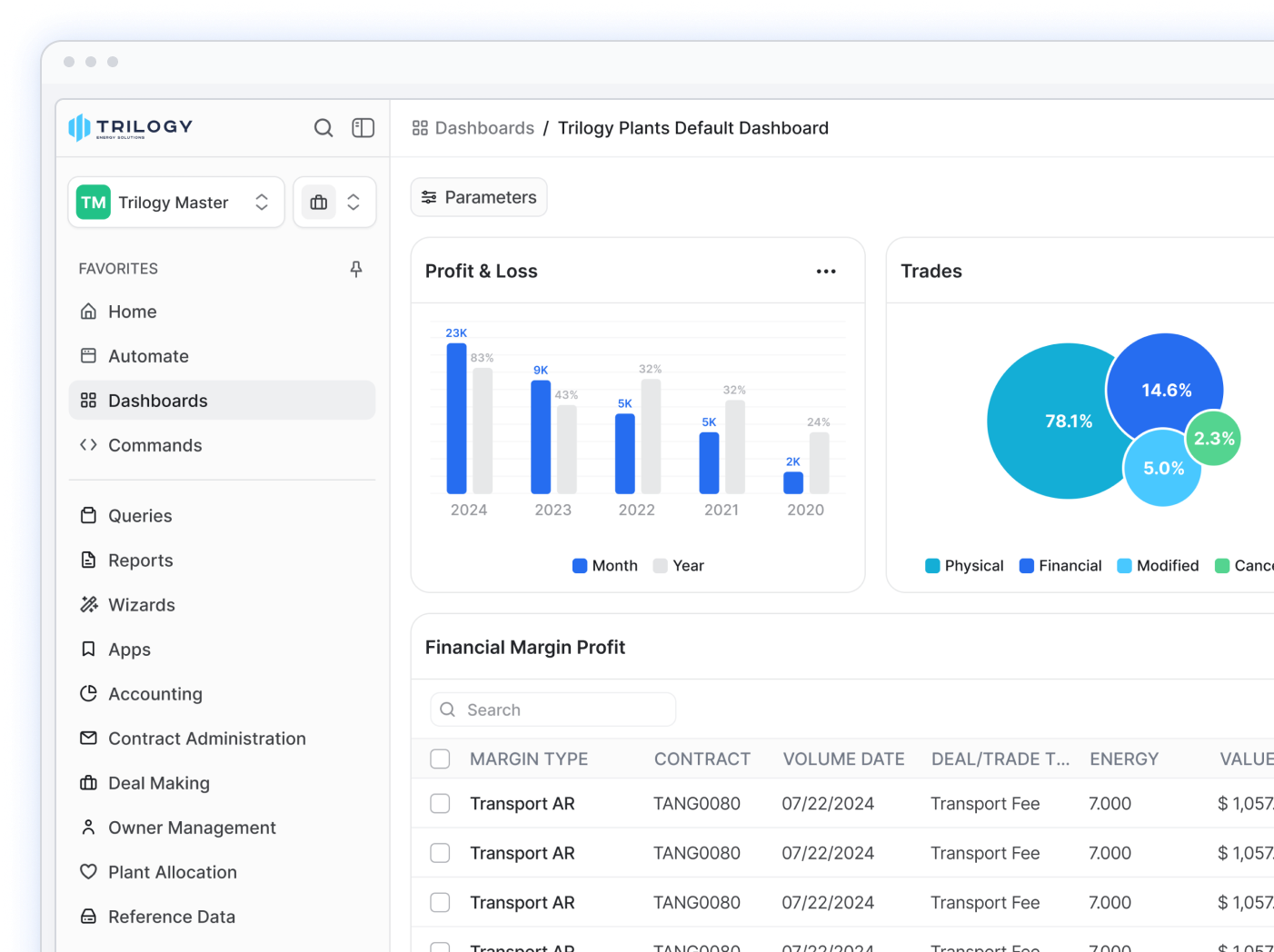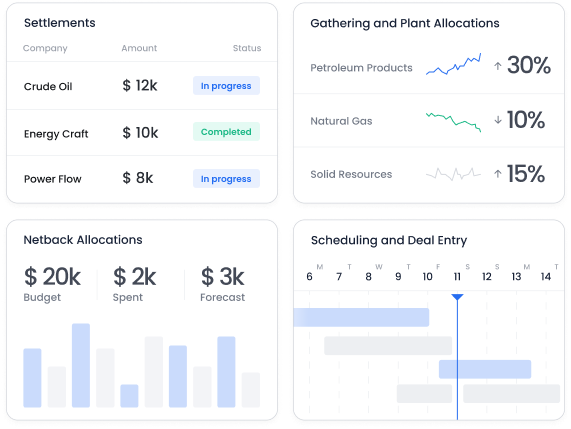The Integrated Energy Solution for Oil & Gas
Dynamic software solutions for producers, gatherers, pipeline and storage operators, and plant processors — fully integrated with ETRM.
Book a demo
Trusted by Global Energy Companies Since 1992








Comprehensive Software Solutions for Energy Companies
Why choose us for your trade and transaction management?
30+
Years of being in business
200+
Years of energy experience on our team
100%
Audit compliance with regulatory and industry standards
20%
Average savings
Seamless Midstream Accounting: Accuracy, Compliance and Efficiency
Unlock the full potential of your Midstream Operations - outsource all or part of your Midstream Oil and Gas accounting needs.














